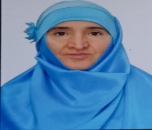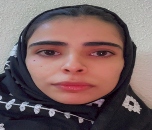About Conference
The 6th International Conference on Optometry will be held in London, UK on June 12-13, 2025. This highly anticipated event, organized by leading experts in ophthalmology, will bring together renowned researchers, practitioners, and industry specialists from across the globe to share the latest developments in eye health and vision science. The conference will feature insightful discussions, cutting-edge presentations, and interactive sessions focused on recent advances in ophthalmic research, diagnosis, treatment methods, and patient care. Attendees will gain valuable insights into emerging technologies, innovative surgical techniques, and breakthrough pharmaceutical treatments shaping the future of eye care.
This conference aims to inspire and energize the optometry community, contributing to the global advancement of vision and eye health.
Sessions
Session 1: Ophthalmology
Ophthalmology is the branch of medicine that deals with the diagnosis and treatment of eye disorders and diseases. Ophthalmologists are medical doctors who specialize in the health of the eyes and visual system. They are trained to provide comprehensive eye care, including prescribing glasses and contact lenses, performing eye surgery, and managing various eye conditions such as cataracts, glaucoma, and retinal diseases. The field of ophthalmology continues to advance with innovations in technology and treatments, enabling better outcomes for patients with vision impairments. Regular eye exams are crucial for maintaining good eye health and preventing vision loss.
Optometry conference 2025 | Ophthalmology Meetings 2025 | Optics Events 2025 | Eye Congress 2025 | Geriatric Optometry 2025 | Optometry Symposium | Vision Workshops 2025
Session 2: AI in Ophthalmology
AI in Ophthalmology is an exciting and rapidly advancing field that leverages artificial intelligence to enhance various aspects of eye care. Here are some key trends and applications of AI in ophthalmology which includes Automated Diagnosis, Predictive Analytics, Personalized Treatment Plans , AI in Imaging, Surgical Assistance, Teleophthalmology , Clinical Workflow Optimization and Drug Discovery and Development . AI’s role in ophthalmology is transforming the way eye diseases are diagnosed, managed, and treated, improving patient outcomes and accessibility to care.
Optometry conference 2025 | AI in Ophthalmology Meetings 2025 | OOptics Events 2025 | Eye Congress 2025 | Pediatric Optometry 2025 | Optometry Symposium | Vision Workshops 2025
Session 3: Gene Therapy for Ocular Diseases
Gene Therapy for Ocular Diseases is an evolving field that holds immense potential for treating inherited and acquired eye conditions. Here’s an overview of its key aspects and recent advancements are Inherited Retinal Diseases, Age-Related Macular Degeneration, Choroideremia, X-Linked Retinoschisis, CRISPR and Gene Editing, Corneal Dystrophies, and Long-Term Effects and Safety.
Gene Therapy in eye conference 2025 | AI in Ophthalmology Meetings 2025 | Optics Events 2025 | Stem cell Congress 2025 | Paediatrics Optometry 2025 | Eye Symposiums 2025 | Vision Workshops 2025
Session 4: Retinal Imaging and Innovations
Retinal Imaging and Innovations have transformed ophthalmology, enabling more precise diagnosis, early detection, and better management of eye diseases. Here are some of the cutting-edge advancements and trends in this field are Optical Coherence Tomography (OCT) Enhancements, Adaptive Optics (AO) Imaging, Ultra-Widefield Imaging, Artificial Intelligence (AI) in Retinal Imaging, Hyperspectral Retinal Imaging, Fluorescein and Indocyanine Green Angiography, 3D and Virtual Reality (VR) Imaging, Multi-Wavelength Imaging, Autofluorescence Imaging and Microsurgical Planning and Intraoperative Imaging
Retinal Therapy in eye conference 2025 | AI in Ophthalmology Meetings 2025 | Optics Events 2025 | Stem cell Congress 2025 | Paediatrics Optometry 2025 | Eye Symposiums 2025 | Vision Workshops 2025
Session 5: Digital Eye Strain and Blue Light Exposure
Digital eye strain, caused by prolonged use of digital devices, can lead to symptoms like eye strain, dryness, and headaches. Blue light exposure from screens has raised concerns about its potential impact on sleep patterns and eye health, prompting the use of blue light filters or specialized glasses to reduce exposure and alleviate symptoms.
Optometry conference 2025 | AI in Ophthalmology Meetings 2025 | Optics Events 2025 | Eye Congress 2025 | Pediatric Optometry 2025 | Optometry Symposium | Digital Eye Health Congress 2025
Session 6: Innovations in Contact Lens Design
Innovations in contact lens design have led to the development of silicone hydrogel materials, allowing for increased oxygen permeability and prolonged wear comfort. Specialized designs such as tori lenses for astigmatism and multifocal lenses for presbyopia cater to diverse vision needs, providing clearer and more comfortable vision. Surface technologies have also advanced, reducing deposit buildup and enhancing moisture retention, further improving the overall experience of contact lens wearers.
Optometry conference 2025 | Eye Contact lens congress 2025 | Optics Events 2025 | Eye Congress 2025 | Geriatric Optometry 2025 | Optometry Symposium | Vision Workshops 2025
Session 7: Regenerative Medicine in Eye Care
Regenerative Medicine in Eye Care particularly involving stem cells and regenerative therapies. This field focuses on harnessing the body’s natural repair mechanisms to restore and maintain eye function, with special attention to corneal repair and vision restoration. Here are the key developments: Stem Cell Therapy for Corneal Repair, Corneal Endothelial Cell Regeneration, Stem Cell Therapy for Retinal Diseases, Organoids and Retinal Patches, Gene-Edited Stem Cells for Eye Disease, Regenerative Eye Drops, Cell-Free Regenerative Therapies and Challenges and Future Directions.
Optometry conference 2025 | Optics Events 2025 | Eye Congress 2025 | Geriatric Optometry 2025 | Optometry Symposium | Retinal Workshops 2025 | Eye Disease Events 2025
Session 8: Advances in Glaucoma Treatment
Advances in Glaucoma Treatment have significantly improved the management of this sight-threatening condition, which damages the optic nerve and can lead to irreversible vision loss if untreated. Glaucoma treatments today are focused on lowering intraocular pressure (IOP) and preserving vision. Here are the most recent and notable advancements in glaucoma care: Minimally Invasive Glaucoma Surgery (MIGS), Sustained-Release Drug Delivery Systems, Gene Therapy for Glaucoma, Neuroprotective Therapies , AI and Digital Health Innovations and Personalized Medicine
Eye Glaucoma conference 2025 | Eye Disease Meetings 2025 | Eye disease innovative technique Events 2025 | Paediatrics Optometry 2025 | Eye Symposiums 2025 | Vision Workshops 2025 | Stem cell Congress
Session 9: Pediatric Optometry
Pediatric optometry focuses on diagnosing and treating vision issues in children, ensuring healthy visual development and academic success. Early detection and intervention are crucial for addressing conditions like amblyopia and refractive errors, optimizing long-term eye health.
Optometry conference 2025 | Ophthalmology Meetings 2025 | Optics Events 2025 | Eye Congress 2025 | Geriatric Optometry 2025 | Optometry Symposium | Vision Workshops 2025
Session 10: Myopia Management
Myopia management is evolving rapidly, with a variety of effective treatments available to slow its progression and reduce the risk of vision-threatening complications. Here are the key strategies and advances in myopia management are Orthokeratology, Atropine Eye Drops, Multifocal Soft Contact Lenses, Multifocal Spectacle Lenses, Environmental and Lifestyle Modifications, Myopia Control Clinics, Advances in Myopia Control Research, Axial Length Monitoring, Public Health Campaigns and Awareness and Myopia Control Beyond Childhood
Myopia conference 2025 | Orthokeratology Meetings 2025 | Optics Events 2025 | Eye Congress 2025 | Geriatric Optometry 2025 | Optometry Symposiums | Ophthalmology Workshops 2025
Session 11: Dry Eye Disease Management
Dry eye disease management involves a multifaceted approach, including artificial tears, prescription eye drops, and lifestyle modifications to alleviate symptoms and improve ocular comfort. Advanced treatments like intense pulsed light therapy and gland expression techniques offer additional options for addressing underlying causes and enhancing tear production.
Optometry conference 2025 | Ophthalmology Meetings 2025 | Optics Events 2025 | Eye Congress 2025 | Geriatric Optometry 2025 | Optometry Symposium | Vision Workshops 2025
Session 12: Ocular Oncology
Ocular Oncology is a specialized branch of ophthalmology focused on the diagnosis and treatment of tumors in and around the eye. These tumors can be either benign or malignant and may affect various structures, including the eye (intraocular), the eyelids (periocular), and the orbit (the bony socket surrounding the eye). Advancements in ocular oncology are enhancing the ability to diagnose and treat these tumors while preserving vision and overall eye health.
Eye oncology 2025 | Ophthalmology Meetings 2025 | Optics Events 2025 | Eye Congress 2025 | Geriatric Optometry 2025 | Optometry Symposium | Vision Workshops 2025
Session 13: Nutrition and Eye Health
Nutrition plays a vital role in maintaining eye health, with certain nutrients supporting optimal vision and reducing the risk of eye diseases. Antioxidants like vitamins C and E, as well as nutrients such as lutein, zeaxanthin, and omega-3 fatty acids, are essential for protecting against age-related macular degeneration and cataracts. A balanced diet rich in colorful fruits and vegetables, fish, nuts, and seeds can contribute to long-term eye health and visual well-being.
Optometry conference 2025 | Ophthalmology Meetings 2025 | Optics Events 2025 | Eye Congress 2025 | Geriatric Optometry 2025 | Optometry Symposium | Glaucoma Workshops 2025
Session 14: Geriatric Optometry
Geriatric optometry specializes in addressing the unique vision needs and challenges faced by older adults. This includes managing age-related eye conditions like cataracts, glaucoma, and macular degeneration, as well as addressing issues such as dry eyes and changes in prescription. Comprehensive eye exams tailored to seniors' needs are essential for preserving vision and maintaining overall quality of life in later years.
Optometry conference 2025 | Ophthalmology Meetings 2025 | Optics Events 2025 | Eye Congress 2025 | Geriatric Optometry 2025 | Optometry Symposium | Vision Workshops 2025
Session 15: Sustainability in Ophthalmology
Sustainability in Ophthalmology is an emerging focus as healthcare sectors, including ophthalmology, recognize the need to reduce their environmental impact. Here are key strategies and innovations for making ophthalmology more sustainable: Reducing Surgical Waste, Energy Efficiency in Ophthalmic Clinics and Surgical Centers, Green Operating Rooms, Minimizing Pharmaceutical Waste, Minimizing Pharmaceutical Waste, Recycling and Proper Disposal of Medical Waste, Sustainable Manufacturing of Ophthalmic Equipment, Telemedicine in Ophthalmology, Staff Training and Engagement and Eco-Friendly Research and Innovation.
Optometry conference 2025 | Telemedicine optometry Meetings 2025 | Optics Events 2025 | Eye Congress 2025 | Eye surgical Events 2025 | Optometry Symposium | Eye Sustainability Workshops 2025
Market Analysis
The global optometry market in 2025 is projected to experience significant growth, with an estimated compound annual growth rate (CAGR) of around 4-6%. This expansion is driven by an increasing demand for vision care services, corrective eyewear, and advancements in optometric technologies. The market size, expected to reach $XX billion by 2025, is bolstered by rising cases of vision impairment, particularly due to conditions like myopia, glaucoma, and diabetic retinopathy, coupled with the aging global population.

Technological innovations such as tele-optometry, AI-driven diagnostics, and the introduction of smart eyewear further fuel this growth, making optometry a key sector in the global healthcare landscape. Moreover, the Asia-Pacific region is anticipated to witness the fastest growth, while North America and Europe continue to lead in market share due to their established healthcare infrastructure and strong demand for advanced eye care solutions.
Participation Benefits
-
Attend keynote presentations by esteemed researchers.
-
Gain access to all sessions and networking opportunities.
-
Receive global recognition for research and profile.
-
Publish abstracts in international journals with unique DOIs.
-
Obtain discounts for publishing articles in open-access journals.
-
Receive handbooks and conference kits.
-
Network with prominent figures from around the globe.
-
Learn and expand knowledge from top professionals.
-
Receive certified participation for abstracts.
-
Establish global connections for research ideas and professional growth.
Participation categories:
-
Keynote Speaker: Deliver a presentation lasting 45-50 minutes, sharing insights as a prominent figure in the field.
-
Speaker (Oral Presentation): Present findings for 25-30 minutes, showcasing individual research or expertise.
-
Speaker (Workshop): Lead a workshop for 45-50 minutes, providing interactive learning experiences.
-
Speaker (Special Session): Contribute to a special session for 45-50 minutes, alongside fellow experts.
-
Speaker (Symposium): Engage in a symposium for more than 45 minutes, collaborating with multiple presenters.
-
Delegate (Registration Only): Access all sessions and benefits upon registration.
-
Poster Presenter: Showcase research through poster presentations, enjoying delegate benefits.
-
Remote Attendance: Participate via video or e-poster presentation.
-
Exhibitor: Display company products through booked booths of varying sizes.
-
Media Partner, Sponsor, and Collaborator: Collaborate with the event, offering support and visibility.








